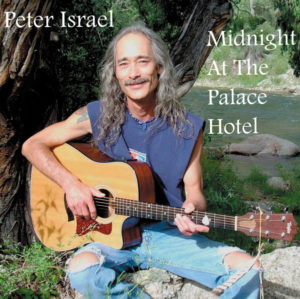By Hal Walter
I don’t get a lot of photo assignments, but I wish I got more like the one this past Thanksgiving week. Publisher Mike Rosso emailed, overwhelmed with a production deadline and a move. He asked if I happened to know the Rusk family and if I could perhaps take pictures of them to accompany an article about land trusts in the upcoming issue of Colorado Central.
I quickly shot back that I had actually known Randy and Claricy for a long time and would be glad to take pictures of them, though I knew it was a busy week. Subsequently it was decided that I would visit the ranch on the Monday before Thanksgiving, as the Rusks would be working cattle there most of the day.
With school out for Thanksgiving break, I loaded up my son Harrison and we headed to the Rusks that morning. The drive over there was a nostalgic journey as I thought back on just how long I had known this family, and I was startled by the fact that I could remember names of their long-dead dogs, “Sis” and “Copper.”
When I first met them about 27 years ago, the Rusks operated The Feed Barn and also a meat-processing business from their headquarters north of Westcliffe, and their son Tate wasn’t much older than Harrison is now. These days Tate helps run the family ranch and his daughter Emma is just a year behind Harrison in school. Tate and wife Wendy also have a younger son, Grant.
Back in the 1990s I would routinely pull up to the feed store for a couple bags of “Westcliffe Mix,” a grain mixture they had custom-mixed by Ranchway Feeds. The feed was formulated by the Rusks to make up for nutritional deficiencies in the local hay. I thought it was pretty cool that they had put this much thought into a grain mixture for local animals, and my burros seemed to do well on it.
Better than the feed mix though was the pleasant and interesting conversation that often accompanied the purchase. It was talk of the country, ranching, animals, fish, the land and heritage.
[InContentAdTwo]
Eventually Randy and Claricy sold the Feed Barn but we stayed in contact. I was fortunate enough to be invited by them a couple of times on fishing excursions to the San Juan River, a world-class fly fishing destination. I always thought I was pretty decent with a fly rod until I fished with Randy, who seemed to catch ten fish for every trout I hooked into on those trips.
I always enjoyed the stories Randy and Claricy told of growing up in the Wet Mountain Valley. Randy, whose family established the ranch following World War II, recalled driving cattle “Down Below” for the winters and horseback adventures in the Sangre de Cristos in the summers. And Claricy, knowing my connection with pack-burro racing, told stories about her childhood neighbors, Walter and Stella Smith, legends in the sport.
If I’d been searching for the authentic salt of the earth through my life’s travels, it seems I found that in Randy and Claricy.
With the credo that the best use of their ranch is agriculture, Randy and his late father Harvey began taking steps in the early 2000s to make sure their ranch was protected from development through conservation easements with various organizations, including San Isabel Land Protection Trust. Between their own holdings and leased grazing land the area of protected rangelands they ranch is upwards of 10,000 total acres.
In a county where many “conservatives” miss the part about conserving, this was not a particularly popular move. The local pro-development crowd lashed out at their efforts to protect the land. The lunatic fringe deemed it a government conspiracy to take over private property rights.
Randy and Claricy were undaunted and stood their ground, literally. Their courage earned them respect nationwide as they were awarded the Leopold Conservation Award and Newsweek magazine’s Giving Back Award, while their achievements were mentioned in publications nationwide. More recently, the Palmer Land Trust awarded the Rusks the 2017 Stuart P. Dodge Award for lifetime achievement in conservation.
What the Rusks really did besides protecting their own land was pave the way for other ranchers to do the same rather than eventually give in to development.
As I drove up to the pens at the Rusk Ranch, Harrison shouted out, “Oh no, there may be someone out of context here!” His friends Emma and Grant were helping out with moving the cattle through a chute to be ear-tagged with radio ID chips. Harrison often has problems when he encounters people he knows in places other than where he is accustomed to seeing them. I talked him through it and soon he was out of the vehicle and taking in the activity.
As Randy and his grandson Grant moved the cattle through the chute, Tate worked the head-catch and Emma operated the squeeze lever. Claricy took notes on a clipboard. Harrison was curious about the operation and Emma invited him into the workspace for a closer look. During a break, Tate showed me pictures of himself with autism icon Temple Grandin from a recent conference he helped organize.
Through the lens of my camera I took all this in, fourth, fifth and sixth generations of ranchers working their land. A young girl with a sense of empathy and maybe her own future in ranching. An autistic boy having an extraordinarily real experience most kids never will know. The wide open spaces of the Wet Mountain Valley spread out vastly in all directions and the Sangre de Cristo range towered over it all.
I did my best, but no photo could really do it justice. The turkey would be cooked later that week, but gratitude was clearly a snapshot of the present.
Hal’s books Full Tilt Boogie and Endurance are available from The Book Haven in Salida.

